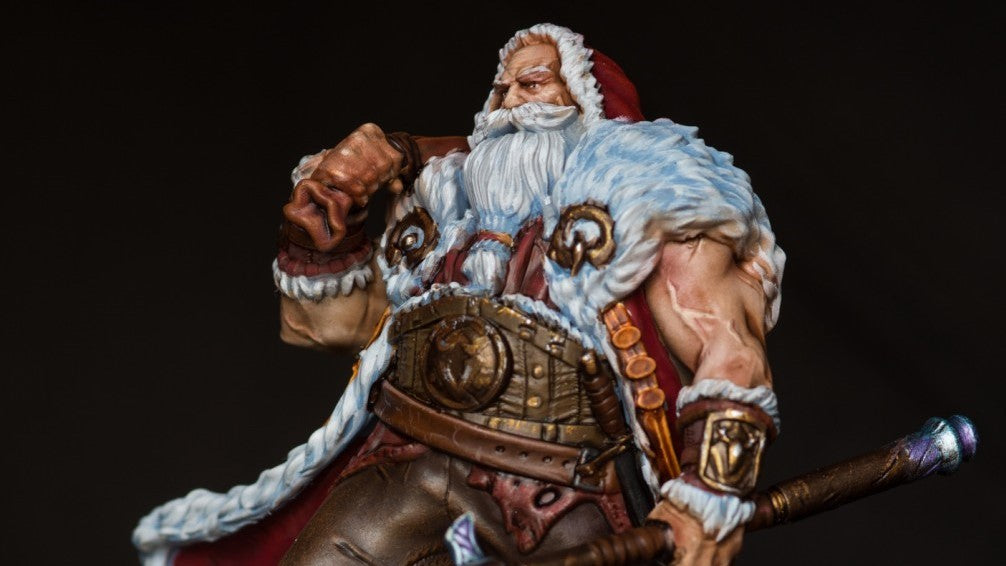While waiting for the end of the long and cold Nordic winters, the Norse peoples also enjoyed this time of year in a great celebration. In part because they had little better to do while huddling over fires in their homes or in communal mead halls, but also because they knew that the sun was heading back their way light would once again overtake darkness. Many cold months were ahead, but the days would slowly start getting longer.
Yule celebration predates Christmas by hundreds of years, a tradition still kept by many people today. In the Dark Ages, the Roman church wanted to convert more "heathens" (literally, "from the heath," i.e., country folk who preferred the Old Ways) to Christianity. To do so, they changed the biblical birth of Jesus to the dead of winter rather than the spring. Over time, Yule traditions were integrated into Christmas and Yule fell by the wayside.

There is, however, nothing wrong in celebrating both Christmas and Yule at the same time. After all, the goal is to bring people together and wish joy and good tidings on all.
Several researchers state that the Yule celebration took place at midwinter, which was at the first full moon after the first new moon after the winter solstice, and that the feast lasted for 3 days. The Norse peoples of old had a different calendar, and that made sense to them. Nowadays most modern heathens celebrate Yule for 12 days, beginning at the winter solstice.
At its core, Yule is about spending time with loved ones and honoring the Gods. Since our modern calendar is different and we have official holidays in December 25th and January 1st, it is only natural most people celebrate Yule during the winter solstice.
Most traditions today place the beginning of Yule together with the winter solstice, on midnight, December 21st, and Yule eve is celebrated as the "Mother Night", the longest night of the year. Preparations must be made to cheer on and strengthen Thor, as he prepares to once again battle the frost giants of Jotunheim with his mighty Mjölnir, to keep them from turning Midgard into a land of frost and bitter cold. With our help, Thor will once gain prevent Fimbulwinter, the great three-year-long winter that heralds Ragnarok.
For 12 days, celebrations are held with friends and family, with much cheer, drink, food, burning of bonfires, and quiet reflection. December 25th falls right in the middle, and New Year's will be its culmination.
During Yule, Odin leads the Wild Hunt through the sky, along with the spirits of humans, horses and dogs. This grand procession takes place during all twelve days of Yule, with the intent of reminding our deceased ancestors that they need to stay on their side of the veil, as it as at it thinnest during this period.

So, how can you celebrate Yule in modern times and still feel like a Viking?
1. One thing you may already do that is a part of the Yule tradition is to bring an evergreen tree into your house and decorate it. This is a pagan tradition at its core, but some choose to do it with their Christian beliefs in mind, or simply as a secular tradition. Many cultures integrate the mythos of trees that symbolize life into their beliefs, from the Tree of Life of Judaism and Christianity to the great World Tree of Norse tradition, Yggdrasil. This one is up to you.

2. A yule log is another option. In honor of Thor, take the largest oak log you can find (or can handle) and kindle it, either in an indoor fireplace or an outdoor fire. Be sure to save some of its charred remains to use for lighting next year's log.
3. Sacrifice a goat. Okay, maybe don't sacrifice it, but goats are associated with Thor and were often slaughtered at this time of the year. After Thor was given his share, any other goats that weren't being saved through the winter were slaughtered. Their meat was either preserved or eaten right away--boiled, pit-roasted, or spit-roasted.
4. Sacrifice a boar. Or just roast up some pork. Either way, continue the tradition of the Oath Boar, during which oaths were solemnly made to Frey over a large boar. Unlike New Year's resolutions, these oaths are meant to be kept.

5. Drink some mead. Before the invention of the champagne by some very crafty and wise French monks, mead was the celebratory drink of choice, usually consumed by wealthy Norsemen, the special drink is meant to be shared on this special occasion.
6. Play some games. The tabletop strategy game Hnefatafl is an obvious choice, but there is nothing wrong in playing any good tabletop game of your preference. Or, if you are in the mood, make up your own drinking games. Remember, when the Norse peoples celebrated Yule in the mead hall, it was all about boasting, oath-making, poetry, dance, and song.
Have a merry Yule!
Sources:
Faulkes, Anthony (Trans.) (1995). Edda. Everyman. ISBN 0-460-87616-3.
Hollander, M. Lee (Trans.) (2007). Heimskringla: History of the Kings of Norway. University of Texas Press. ISBN 978-0-292-73061-8
Orchard, Andy (1997). Dictionary of Norse Myth and Legend. Cassell. ISBN 0-304-34520-2.
Orel, Vladimir (2003). A Handbook of Germanic Etymology. Leiden: Brill Publishers. pg. 205. ISBN 90-04-12875-1.
Simek, Rudolf (2007) translated by Angela Hall. Dictionary of Northern Mythology. D.S. Brewer ISBN 0-85991-513-1












